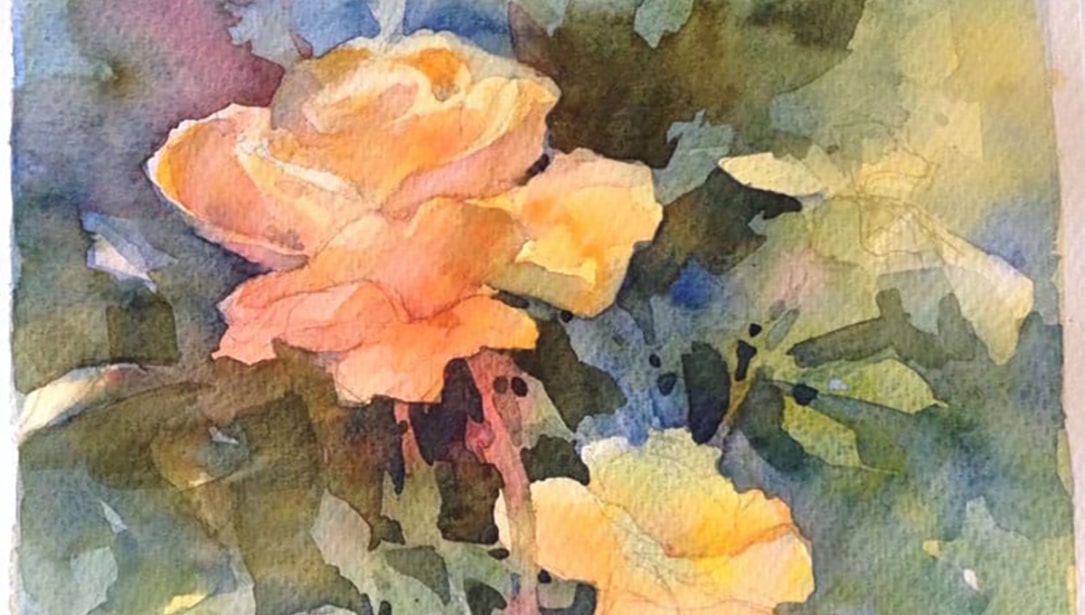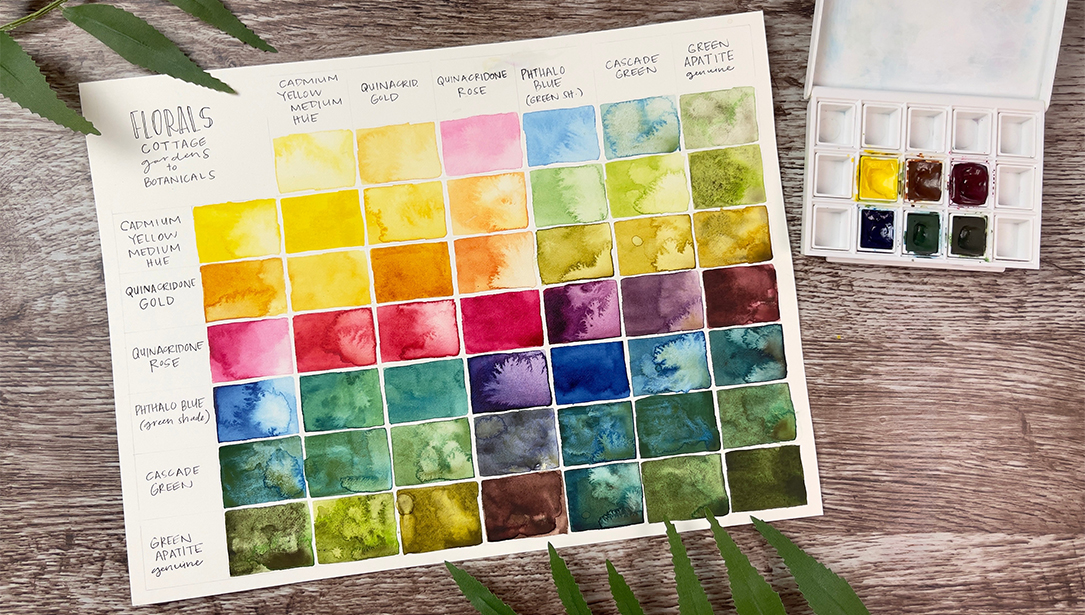Share:
I like this quote, “Ashes to ashes, dust to dust.” One reason I chose DANIEL SMITH watercolors is because they have the most unique and natural granulation, which reminds me of ash and dust. I believe this unique granulation makes artwork more vivid. As an illustrator, most of my inspiration to paint and draw comes from either my imagination, daily life or some thoughts from novels and movies. Normally I paint on hot-press watercolor paper – natural white is the best. I like a smoother surface which helps for painting detail.

This is my quick warm up sketch before I do a big project. In this small painting, I used Undersea Green, Green Apatite Genuine, Mayan Blue Genuine and Anthraquinoid Scarlet.

One thing that always surprises me when painting wet into wet, is when granulating pigments flow into water, you can see the texture they leave on the paper. When two or more granulating colors are added together, wet into wet, they gradually combine into new colors with unique characteristics which reminds me of the dust found in nature.

For this painting, I used Green Apatite Genuine, Undersea Green, Anthraquinoid Scarlet, Lunar Blue and Shadow Violet.

Green Apatite Genuine is one of my favorite pigments; it can make a beautiful range of greens, from fresh grass to deep olive. Plus, after the color dries, you will see that there is some brown texture left on the top, which looks like ash or pollen, which is naturally found in a forest.

As you see in this next painting, the two women’s heads are made with another of my favorite pigments, Shadow Violet. A deep, warm violet in mass tone, it reveals a slight orange glow with a thin application.
I took a time-lapse video to record my whole painting process for Sleeping in the Spring, using Undersea Green, Green Apatite Genuine, Rare Green Earth, Mayan Blue Genuine, Anthraquinoid Scarlet and Shadow Violet.

Here’s my quick process for painting wet into wet:
1. Draw a simple shape to paint with a colored pencil.

2. Brush water into the area that you want to paint first.

3. Normally I start painting the darker side first. Let the pigment just flow with the water, you don’t need to control them.

4. Add a second layer of color to the darker side. Remember to keep the painting wet.

5. Make plants and leaves with simple brush strokes.









